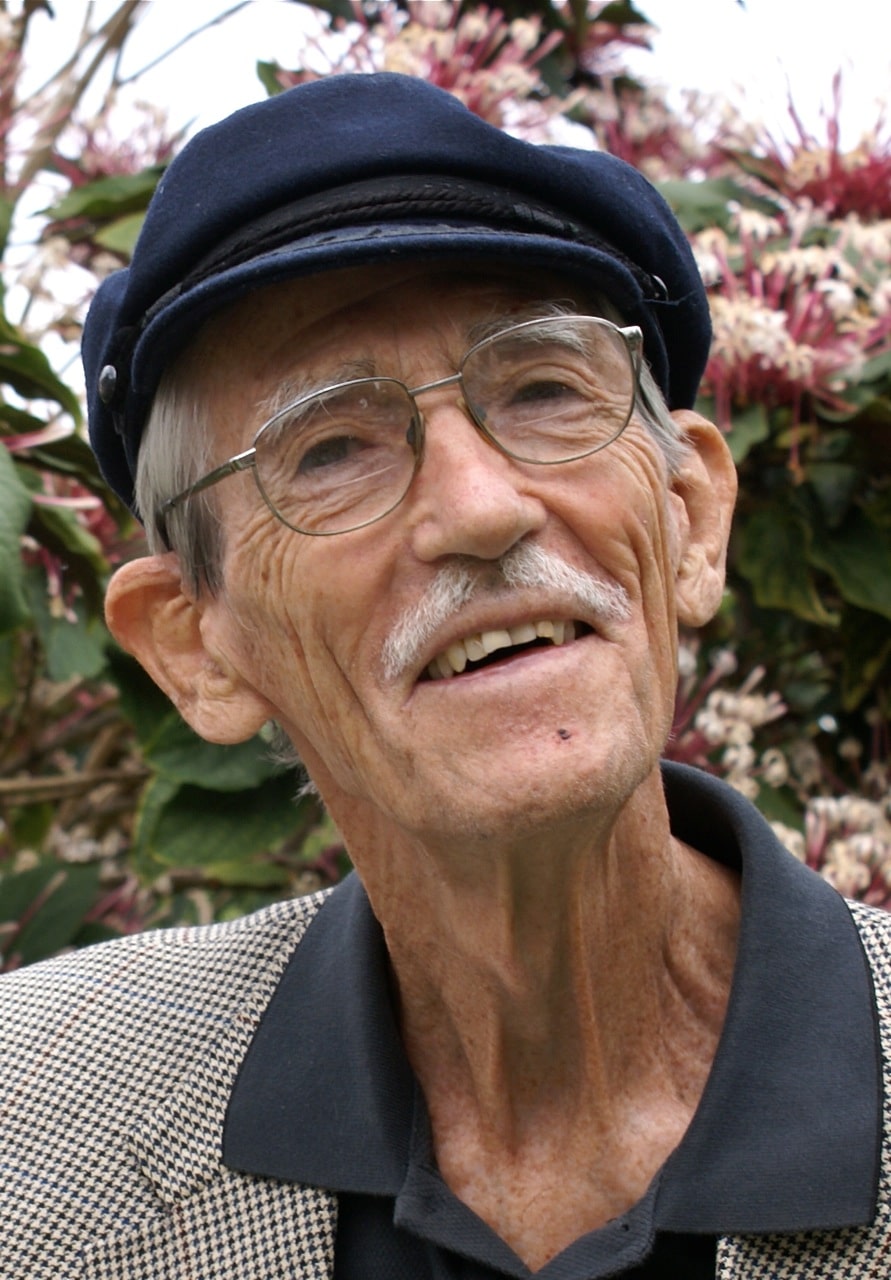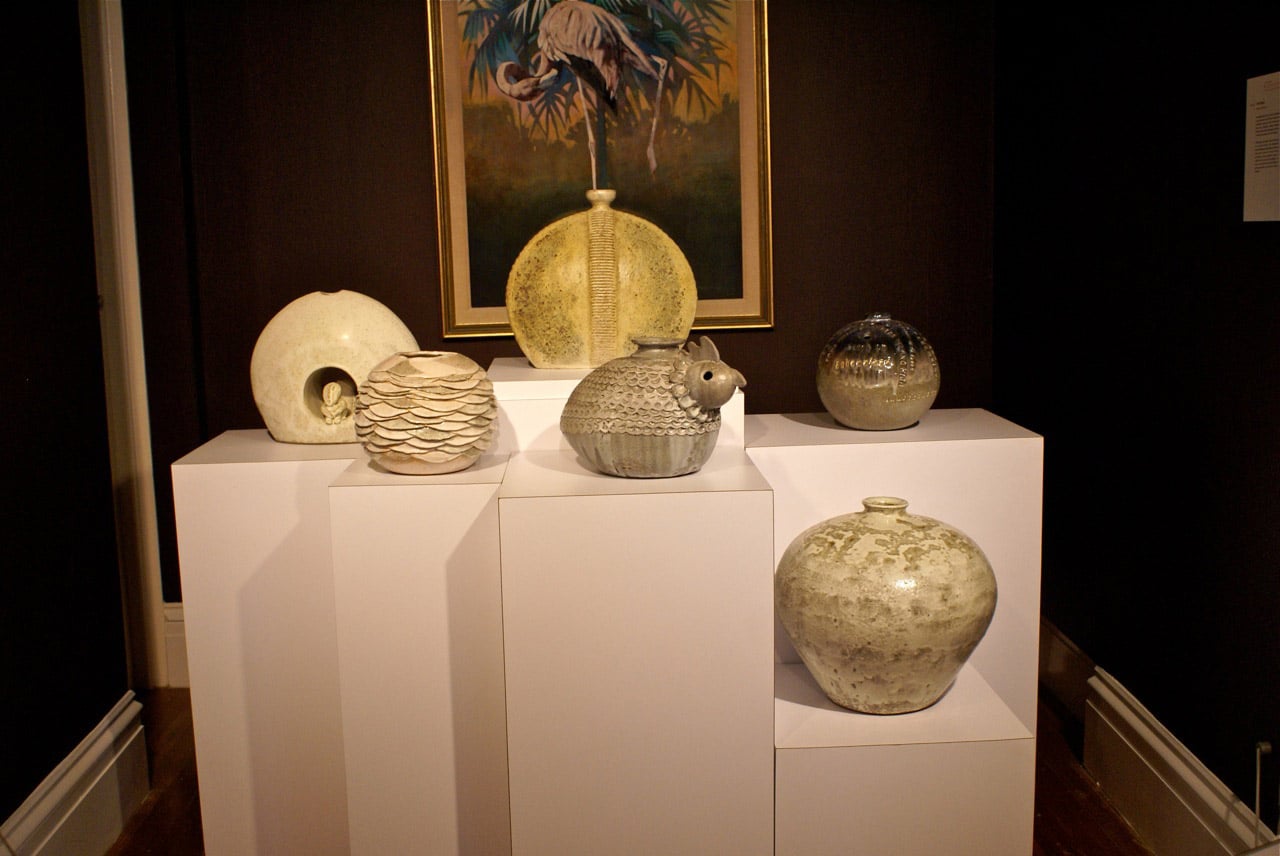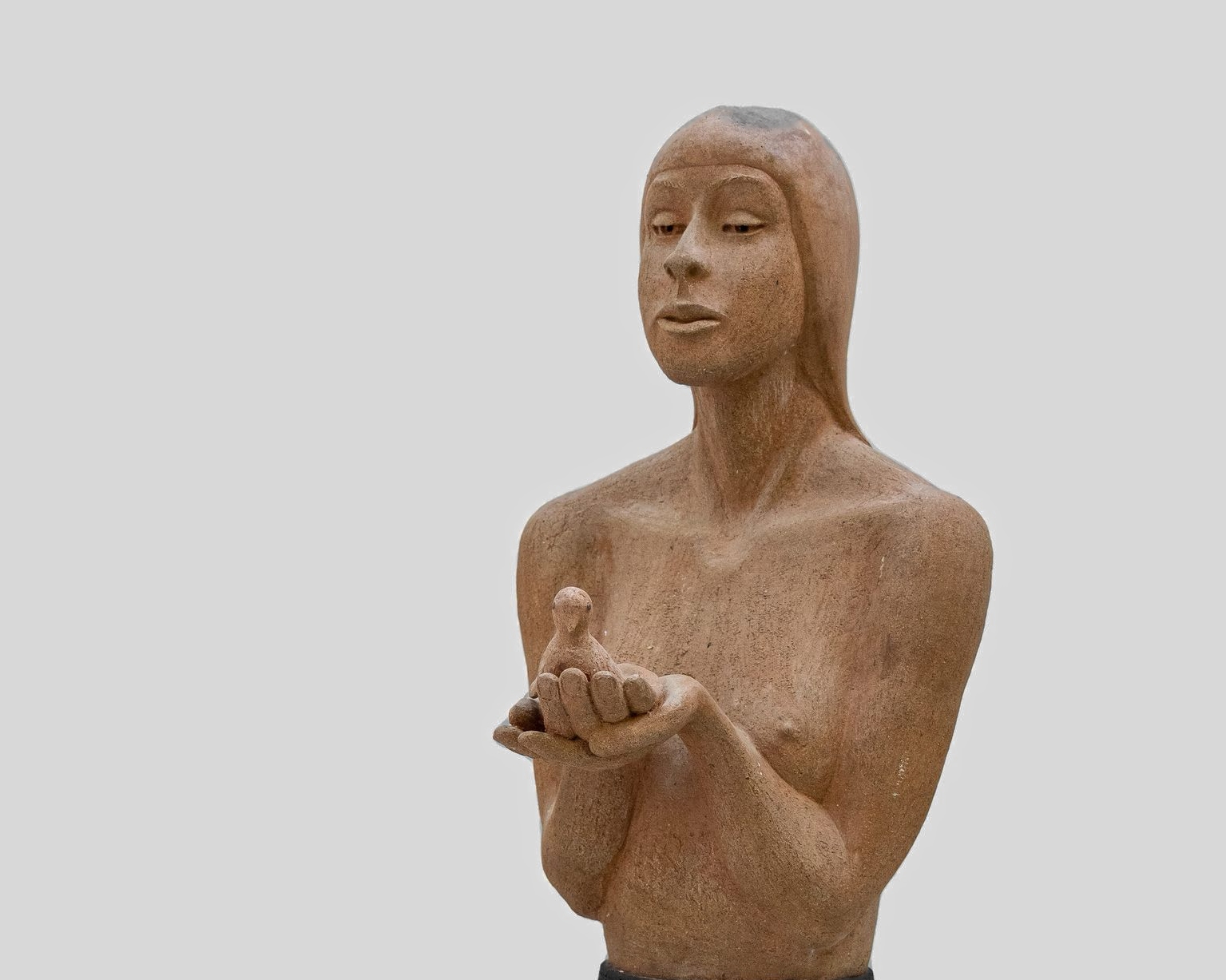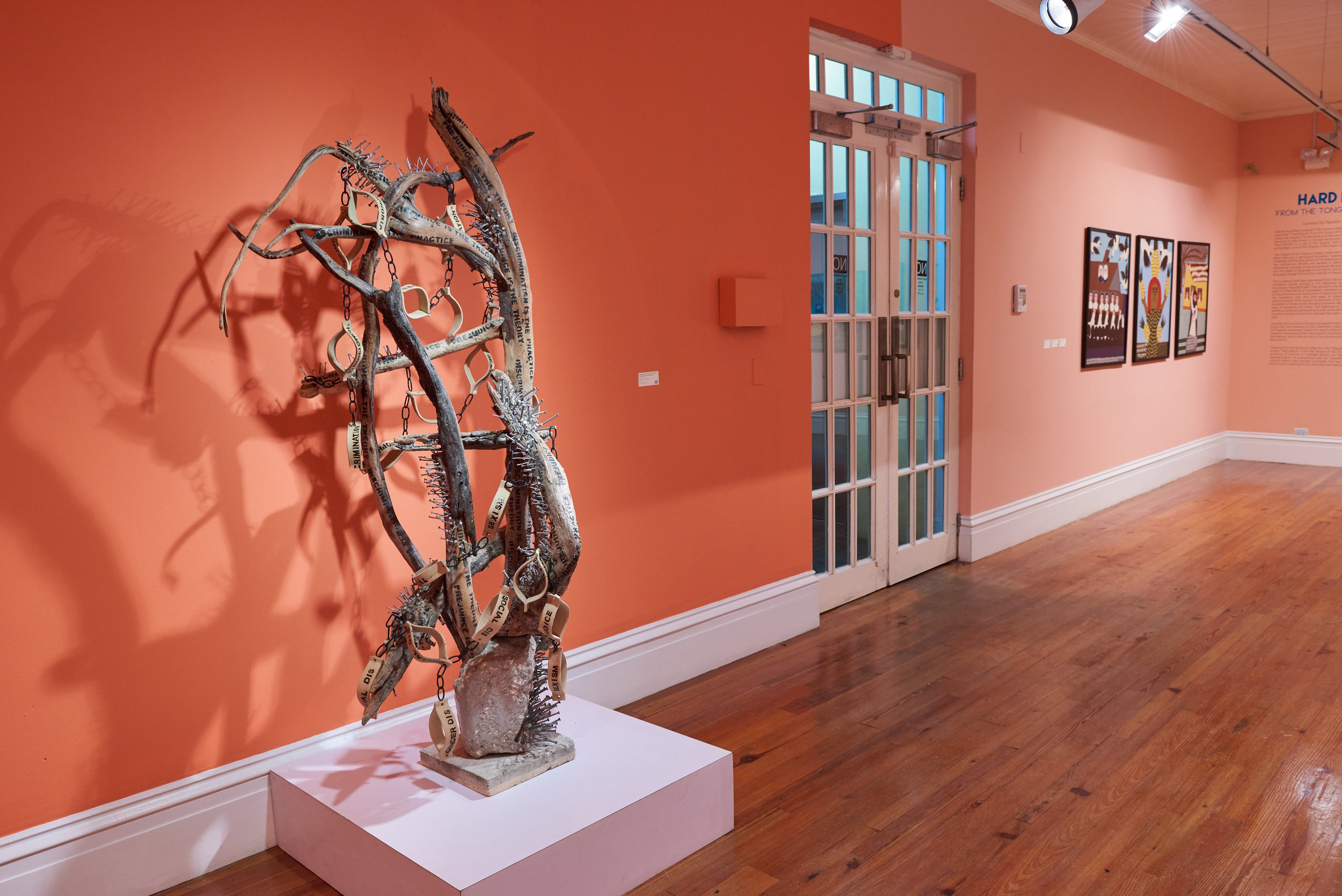Denis Knight: An Incredible Journey (1926-2018)
Katrina Cartwright ● 4 December 2018

In a small pottery studio, a little off the beaten path in Petty’s, Long Island, a teacher patiently instructs his student on the appropriate techniques to use to complete the ceramic piece she is working on. They are discussing the student’s pending college application and what she is choosing to study. He suggests “Why don’t you study ceramics? It’s something you seem to enjoy and you have a knack for it.” The student scoffs at the idea–what kind of job could one possibly get with a degree in ceramics? The instructor doesn’t push, only encourages the student to think about it, and they go on to discuss other ideas in the peaceful quiet, broken only by the occasional bird call or rustle of leaves.
Knight was a charming, soft-spoken man, always courteous, always kind and thoughtful to his friends and students.
And so went many of my interactions with Denis Knight during my last two years of high school, where Friday evenings were reserved for afterschool classes at his pottery studio. It was during this time he would share tidbits of knowledge, gently make suggestions and provide a safe, learning space that was free of the pressures of the regular classroom. After so many years these memories have dimmed but what has not been weathered by the rigours of time is the impact he has had on my life and that of so many others. Knight was a charming, soft-spoken man, always courteous, always kind and thoughtful to his friends and students. He passed away on Saturday, November 17th, 2018. He was 92 years of age.
A British native, Knight was introduced to pottery at Bournemouth College of Art, England where he completed a teacher training programme at Shoreditch Training College and studied under David Ballantyne. Encouraged by his first wife, June Knight, he applied and was accepted to the position of head teacher at the Government School in Governor’s Harbour, Eleuthera where they moved in 1959. While he believed that teaching on an island in The Bahamas would be preferable to doing the same in London, he and his wife were shocked upon their arrival in Governor’s Harbour to find that there was no designated school building and there teaching materials consisted of a severely limited selection of books. Classes were held in a local church and Knight, a skilled carpenter, built desks and chairs and with the assistance of June Knight who had been conscripted to teach as well, was able to secure more books for the school.
At the end of his contract he became the Chief Occupational Therapist at Sandilands Rehabilitation Centre in New Providence, where ceramics was adopted as a part of a treatment programme. His son, Marshall Knight, recalls a childhood where school pick-ups were followed by trips to Knight’s work room at the rehabilitation centre–where weaving materials and clay filled the space–and endless hours were spent after school in Knight’s pottery studio at their house.
Knight joined the dynamic group of artists at Chelsea Pottery in the 1960s, working with master potter David Rawnsley and participating in numerous group shows during his time there. He brought his love of learning and belief in bringing rigour to the artistic practice to the generation of artists he taught during his twelve-year tenure. These artists include Jolyon Smith, John Beadle, Clive Stuart, Dionne Benjamin-Smith and Erica James and while many of them did not choose to pursue a career in ceramics his approach to art making earned him their life-long respect.

While teaching, Knight constantly honed his craft, in the 1970s furthering his professional development by taking pottery courses in California and England and receiving specialised training in throwing techniques under the tutelage of Marguerite Wildenhain, formerly of the Bauhaus Group. He most often exhibited work alongside his friend, the artist Brent Malone, who would not have an exhibition without Knight, a practice that continued until Malone passed away in 2004.
The vessel was Knight’s preferred mode of expression and he incorporated text and marine and terrestrial themes that spoke to the history and landscape of The Bahamas into the surface and structure of his work. Like many artists, he experienced moments of doubt around his practice but the constant support and encouragement of his first wife June Knight, which continued after they divorced, and that of his second wife Marina Knight, with whom he spent 33 years beautiful years, had a major influence on his work and his over 60-year journey as an artist.
In 1989, he moved with his wife Marina, who predeceased him this past June, to Long Island, The Bahamas and started a small pottery and showroom in the settlement of Petty’s. At an artist talk at the NAGB in 2007 Knight recommended that every ceramist do two things during their lifetime: dig clay and try to use it; do a firing of their own without gas or electricity. He followed these tenets during his career as a ceramist, actively seeking and using locally found clays and building a domed wood-fired kiln near his Long Island studio to compensate for the lack of electricity—a method thousands of years old that is the true embodiment of the spirit of the material and its relationship to the earth.
Knight was an able and enthusiastic ceramist into his eighties and found the tendency for ceramics to be dismissed as a craft confusing. He believed that to excel at a craft requires “a human being who has learned and acquired a skill, who is strong in his individuality; cunning, resourceful and inventive, unconventional and free” (Love and Responsibility, The Dawn Davies Collection, 2012). Ceramics could therefore only be done by passionate, creative, critical individuals whose work reflect the uniqueness of the artists’ idea and practice. If not in this manner, how else would art be defined?
The recipient of several honours, Knight received the E. Clement Bethel Award for Excellence in the Arts in 2001 and was honoured at the First All Ceramics Exhibition at Popopstudios in 2009, organized by Jessica Colebrooke. It was through this exhibition that the Denis Knight Choice Award began, a scholarship that has assisted many students with a particular interest in ceramics–who are enrolled in the Art Department at COB, now UB–with their studies.
While the title “grandfather of Bahamian ceramics” has a prestige could make the man appear beyond the reach of the common person, for those of us who had the privilege of knowing Denis Knight, his humble, cheerful, gentle, sincere demeanour was one that welcomed everyone he met. Even during his declining health he was always cheerful and while he will be missed, a life as full, long-lived and beautiful as his must be celebrated. Mr. Knight I am sure that you are at this very moment continuing your pursuit of mastery in “the big pottery in the sky” (Love and Responsibility, The Dawn Davies Collection, 2012).
Text excerpts taken from Denis Knight’s biography and an interview with Marshall Knight

